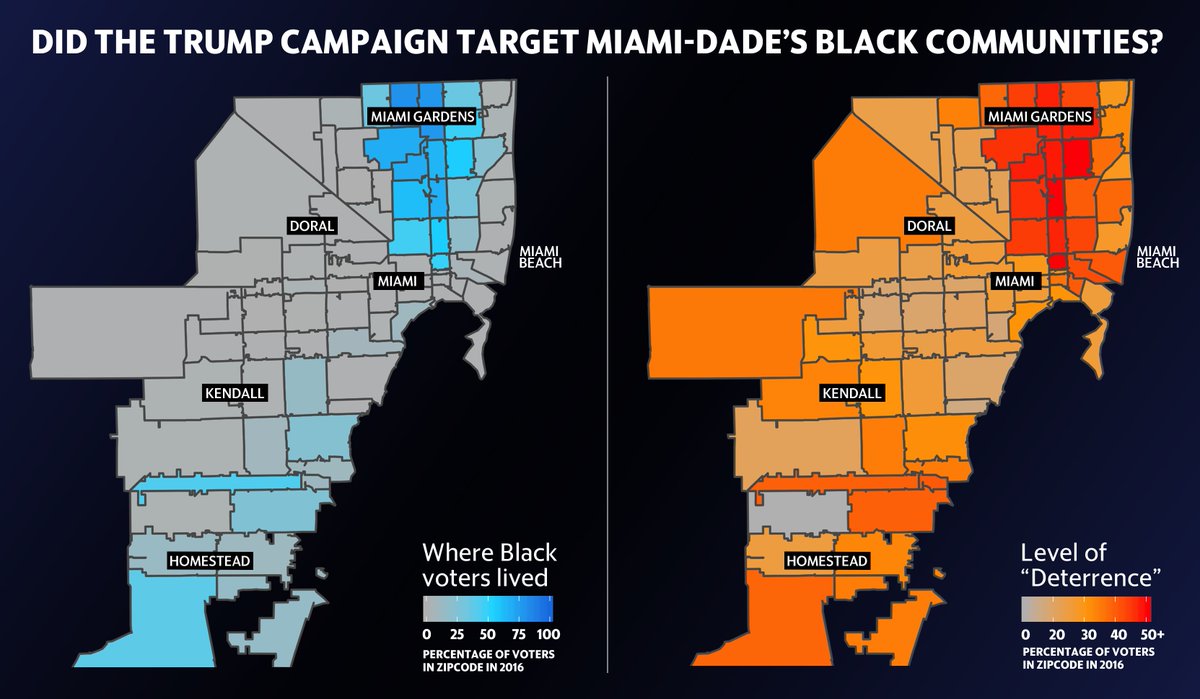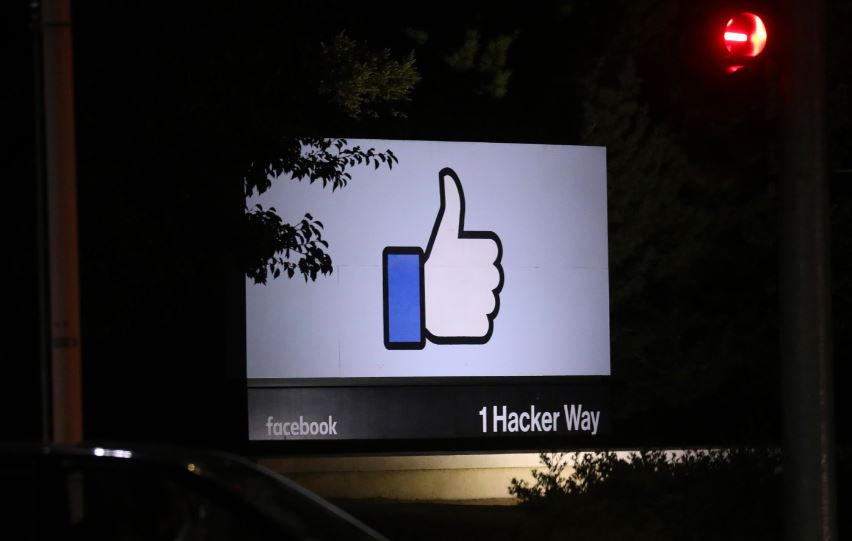It was a quiet effort — and largely targeted people of color.
In 2016, the Trump campaign built a database that included 13.7 million Floridians.
The profiles included detailed information on their political leanings, income, race, ethnicity, place of origin and more. (THREAD)
In 2016, the Trump campaign built a database that included 13.7 million Floridians.
The profiles included detailed information on their political leanings, income, race, ethnicity, place of origin and more. (THREAD)
They used the data to identify Black residents, especially on either side of I-95 in North Miami-Dade, who were unlikely to vote for Trump.
Their goal was not to win them over, but to deter them from voting for @HillaryClinton, using negative ads, some laden with misinformation.
Their goal was not to win them over, but to deter them from voting for @HillaryClinton, using negative ads, some laden with misinformation.
Internally, they called the category ‘deterrence.’
Critics call it a new form of voter suppression. https://www.miamiherald.com/news/politics-government/article246429000.html">https://www.miamiherald.com/news/poli...
Critics call it a new form of voter suppression. https://www.miamiherald.com/news/politics-government/article246429000.html">https://www.miamiherald.com/news/poli...
In Florida, Trump’s team marked more Black voters for ‘deterrence’ than in any other state — roughly 658,000 people, or 40% of Black voters in the Trump database, according to exclusive data shared with the @MiamiHerald by the U.K.’s @Channel4News.
More than 60% of Black voters in some North Miami-Dade precincts were designated for deterrence, the analysis shows. A significant number of Hispanic voters who lived along I-95 were lumped into the Trump campaign’s deterrence strategy.
In comparison, the analysis found, 23% of Whites in Miami-Dade were marked for deterrence. Liberal Broward County had similar breakdowns.
Countywide, one-in-two Black people and more than one-in-four Hispanics were labeled as voters the campaign sought to deter, compared to fewer than one-in-five Whites.
GOP efforts to dilute voting power in communities that favor Democrats — ranging from gerrymandering to closing polling places to curbing early voting — are nothing new.
But this time, it was a *candidate* — Trump — who tried to limit minority turnout.
But this time, it was a *candidate* — Trump — who tried to limit minority turnout.
And he wouldn’t have been able to do so had it not been for a high-tech advantage — the trove of data collected on Americans on social media platforms and sold to campaigns.
Here’s how it worked: After hiring the UK data firm Cambridge Analytica, which had controversially scooped up information on 87 million Facebook users from the social-media giant, the Trump campaign built detailed profiles of potential voters that included their race.
It then used those profiles to individually target people with advertisements and door-to-door visits designed to dissuade them from voting.
Many of the ads were so-called “dark posts” on Facebook, designed to be seen by only small groups of voters and then disappear forever.
Many of the ads were so-called “dark posts” on Facebook, designed to be seen by only small groups of voters and then disappear forever.
Critics of the Trump campaign, including former employees of Cambridge Analytica, say the operation amounted to digital voter suppression — something distinct, they argue, but just as undemocratic as laws that close polling places or disenfranchise felons who served their time.
“This is nonsense,” Tim Murtaugh, the Trump campaign’s spokesman, told the Herald Wednesday. “Every ad is meant to draw more supporters to President Trump. He has a far better record for the Black community than Joe Biden and it’s not even close.”
The messages pumped out by the campaign and pro-Trump super PACs to target Black voters included a misleading clip of @MichelleObama edited to make it appear that she was criticizing Clinton.
There were also falsehoods about the Clinton Foundation’s work in Haiti. (Miami-Dade has one of the highest populations of Haitian immigrants in the country.)
The end result: Trump carried the state of Florida by more than 100,000 votes, boosted by huge turnout in rural and suburban White areas of the state and fewer minorities showing up to the polls.
Our analysis offers a window into how the Trump campaign undercut Clinton in 2016, and how it could do it again in 2020, as Democratic nominee @joebiden relies heavily on robust Black voter turnout to win the nation’s largest battleground state. https://www.miamiherald.com/news/politics-government/article246429000.html">https://www.miamiherald.com/news/poli...
Reporters @nicknehamas, @Blaskey_S, @NewsbySmiley, @stclaudeii, @Christina_M18, @AnaChacinc, @ShirshoD and @yadiraxlopez will have more on the Trump organization& #39;s data-driven operation and how it could impact the 2020 race as Election Day approaches on Nov. 3.
To support investigative journalism like this, please consider a digital subscription to the Miami Herald: https://account.miamiherald.com/subscribe/create?param=f3NFDkY=&offer=NmEfaxcUb3lSCUJAfRIzcktLBwsydCggFxpAG15QPgoUG0hQeHNEDkRGb29STx0HLisVS1BIbw45eEtLHRRCdD1DeHpJGw8%3D&cid=soc_twitter_covid-news-nicholasnehamas-.99-2mo-15.99_202004">https://account.miamiherald.com/subscribe...

 Read on Twitter
Read on Twitter









